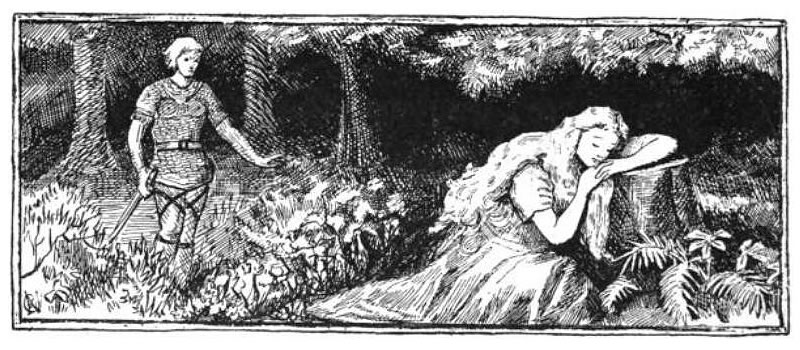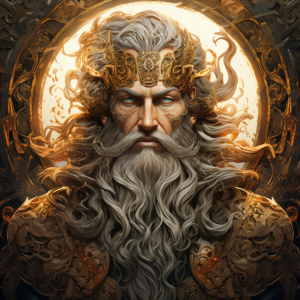The name of Sif, the Norse earth goddess, means “relation by marriage.” Her marriage to Thor, the thunder god, and her long golden hair that is said to represent fields of wheat, are the two most prominent things we know about her.
Origins
Sif is mentioned only in passing in Old Norse literature. She appears in both the Poetic Edda, a 13th century compilation of traditional sources, and the Prose Edda, written by Snorri Sturluson in the same century.
It is clear from the references to Sif that she was an important deity until the early medieval period. The Norse people associated her with the earth, fertility, and family caregiving. She was mother to Thrúd, her daughter with Thor, and Ullr, a son whose father is unknown.
Symbols
It has been proposed that Sif’s hair is a symbol of golden wheat. With Thor being the god of thunder and lightning who played a role in the weather and the promotion of agriculture, it made sense for his wife to be the earth goddess associated with fertility.
Stories
Perhaps the most famous story involving Sif is the one where her long golden hair is cut off by Loki, the trouble maker and trickster god. This is also the tale about the origin of Thor’s hammer.
Loki was in one of his mischievous moods when he came across a sleeping Sif and decided to cut off her hair. Thor, who loved his wife’s shining tresses, was away at the time. On his return, a sorrowful Sif offered to go away to spare him the shame, but Thor knew it was Loki’s doing and became very angry.

Thor wanted to kill Loki, but was prevented by Odin, the father of the gods. Instead, Loki was forced to visit the dwarves in their home below the earth and ask them to make a wig for Sif. The dwarves were master-smiths and crafted the wig from the finest gold, creating a new head of hair that was even more beautiful than the original.
Loki dared the dwarves to make three more masterpieces. One of these turned out to be the magical hammer called Mjollnir, which could crush mountains and boomeranged back to its owner. The hammer was presented to Thor together with Sif’s new hair.
Facts About Sif
- The name Sif has its origins in the Old Norse word sifjar. According to the Icelandic dictionary, Sifjar is the plural for Sif and means “sib, affinity, connection by marriage”;
- Sif’s son Ull is the god of winter and of hunting. He was married to Skadi, the goddess of winter. In modern times, he also became known as the god of skiing;
- Sif was a loyal wife and the symbol of fidelity. In addition to her own children, she also nurtured Thor’s sons, Magni and Modi whom he had with his mistress Jarnsaxa;
- Although this fact is not mentioned in the Eddas, some historians believe Sif possessed the gift of prophecy;
- The giant Hrungir boasted that he will destroy Asgard, the home of the Norse gods, and abduct Sif and Freya, goddess of love, to live with the giants;
- In Old Norse literature, Sif is often connected to cups and cauldrons. One story tells the tale of Sif pouring Loki a cup of mead (honey wine);
- The dwarves who made Sif’s new hair were the sons of Ivaldi. They lived in a cavernous home called Svartalfheim;
- Germanic sources describe Sif as a swan maiden who can assume the form of a swan;
- The Marvel Comics character called Sif is based on the goddess in Norse mythology. She features in the three Thor films as well as the Marvel’s Agents of S.H.I.E.L.D television series;
- A species of moss (Polytrichum aureum) was named after Sif. It was called haddr Sifjar, or “Sif’s hair,” in Old Norse;
- Sif Mons, a volcano on the planet Venus, was named after Sif.






